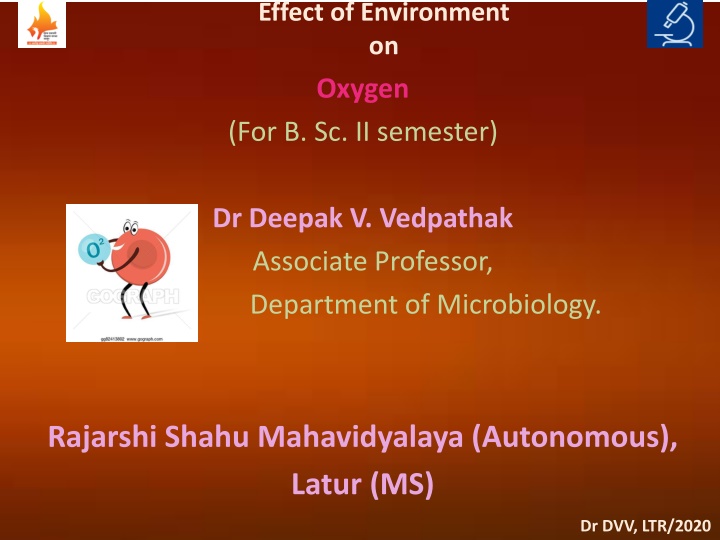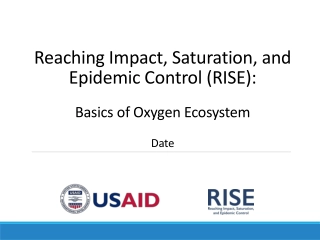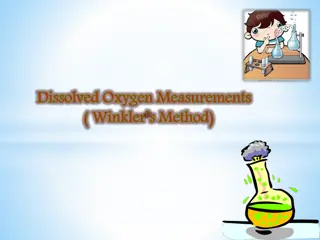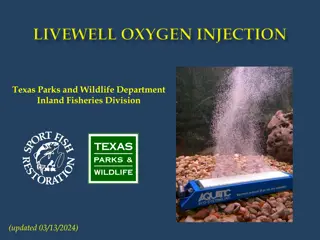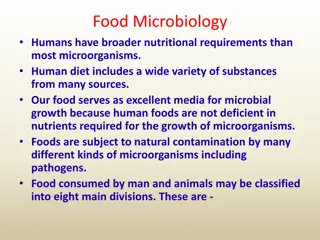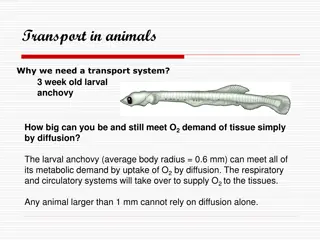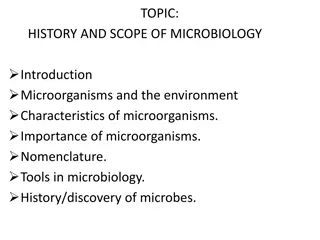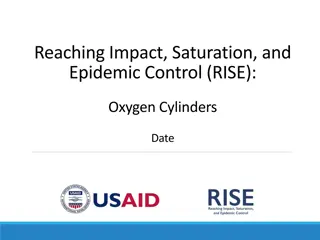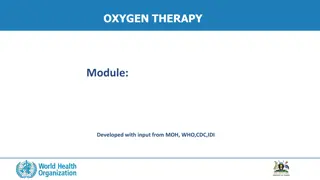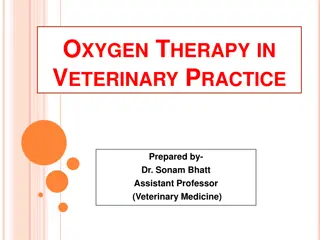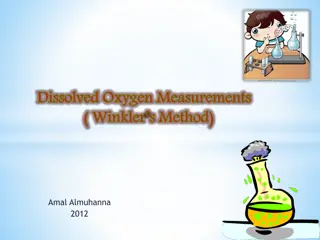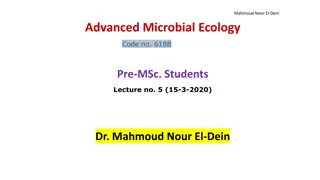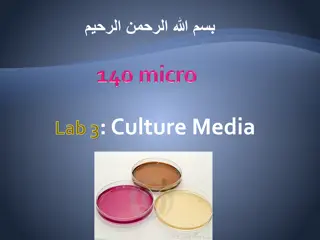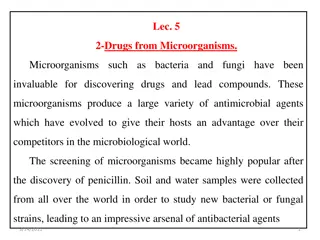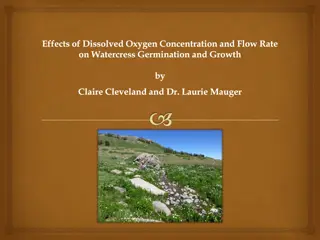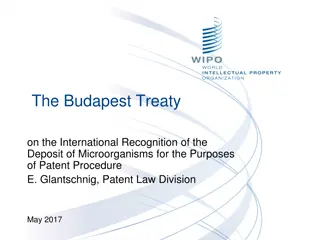Categories of Microorganisms Based on Oxygen Requirements
This content explores how different categories of microorganisms require varying levels of oxygen for growth, including obligate aerobes, obligate anaerobes, facultative anaerobes, aerotolerant anaerobes, microaerophiles, and capnophiles. It also discusses oxygen toxicity and its impacts on aerobic and anaerobic microorganisms.
Download Presentation

Please find below an Image/Link to download the presentation.
The content on the website is provided AS IS for your information and personal use only. It may not be sold, licensed, or shared on other websites without obtaining consent from the author.If you encounter any issues during the download, it is possible that the publisher has removed the file from their server.
You are allowed to download the files provided on this website for personal or commercial use, subject to the condition that they are used lawfully. All files are the property of their respective owners.
The content on the website is provided AS IS for your information and personal use only. It may not be sold, licensed, or shared on other websites without obtaining consent from the author.
E N D
Presentation Transcript
Effect of Environment on Bacterial growth Oxygen (For B. Sc. II semester) Dr Deepak V. Vedpathak Associate Professor, Department of Microbiology. Rajarshi Shahu Mahavidyalaya (Autonomous), Latur (MS) Dr DVV, LTR/2020
LEARNING OBJECTIVES Interpret visual data demonstrating minimum, optimum, and maximum oxygen or carbon dioxide requirements for growth Identify and describe different categories of microbes with requirements for growth with or without oxygen: obligate aerobe, obligate anaerobe, facultative anaerobe, aerotolerant anaerobe, microaerophile, and capnophile Give examples of microorganisms for each category of growth requirements Dr DVV, LTR/2020
Categories of microorganisms---1 Obligate (strict) aerobes: grow only in presence of molecular oxygen(Bacillus subtilis, Mycobacterium tuberculosis, Nocardia species, Fungi, algae) Obligate anaerobes (oxygen sensitive): Do not grow in presence of oxygen (Clostridium spp. C. tetani, C. perfringens,) Obligate anaerobic procaryotes may live by fermentation, anaerobic respiration, bacterial photosynthesis, or the novel process of methanogenesis. Facultative anaerobes: Growin the presence of oxygen but also grow in its absence if a suitable electron acceptor other than oxygen is available (Staphylococci and Enterobacteriaceae ) Under anaerobic conditions (no O2) they grow by fermentation or anaerobic respiration, but in the presence of O2they switch to aerobic respiration. Dr DVV, LTR/2020
Categories of microorganisms----2 Aerotolerant anaerobes: Do not use oxygen for growth but they are not harmed by the presence of oxygen (Lactobacillus spp. and Streptococcus spp.) They live by fermentation alone whether or not O2is present in their environment Microaerophiles: Require a minimum level of oxygen for growth, about 1% 10%, well below the 21% found in the atmosphere. (Campylobacter jejuni) Capnophiles: Bacteria that grow best in a higher concentration of CO2and a lower concentration of oxygen than present in the atmosphere Dr DVV, LTR/2020
Oxygen Toxicity: 1 Concentrations of oxygen higher than that found in air are toxic to many aerobic microorganisms. Oxidations of flavoproteins by O2 result in the formation of H2O2(peroxide) as one major product and small quantities of an even more toxic free radical, superoxide or O2.-. F ADH2 + O2 Oxidase FAD + H20 2 E. coli and all aerobic and aerotolerant microorganisms contain the enzyme superoxide dismutase, which converts the radical to H20 2 and O2 Aerobes contain catalase, which converts H20 2 to oxygen and water The lactic acid bacteria lack catalase, they decompose H2O2by means of peroxidase Dr DVV, LTR/2020
Oxygen Toxicity: 2 Also, chlorophyll and other pigments in cells can react with O2in the presence of light and generate singlet oxygen, another radical form of oxygen which is a potent oxidizing agent in biological systems Their possession of carotenoid pigments which physically react with the singlet oxygen radical and lower it to its nontoxic "ground" (triplet) state. Carotenoids are said to "quench" singlet oxygen radicals Obligate anaerobes lack superoxide dismutase and catalase and/or peroxidase Dr DVV, LTR/2020
